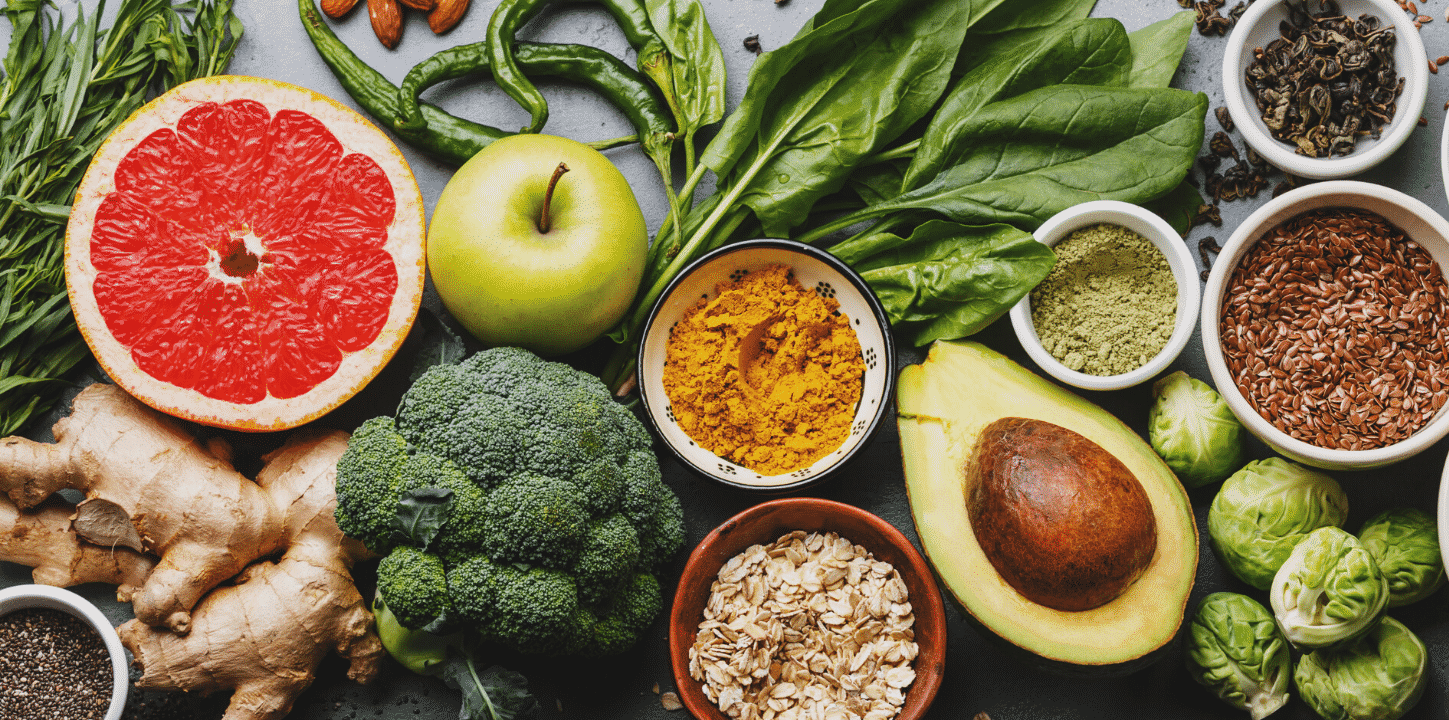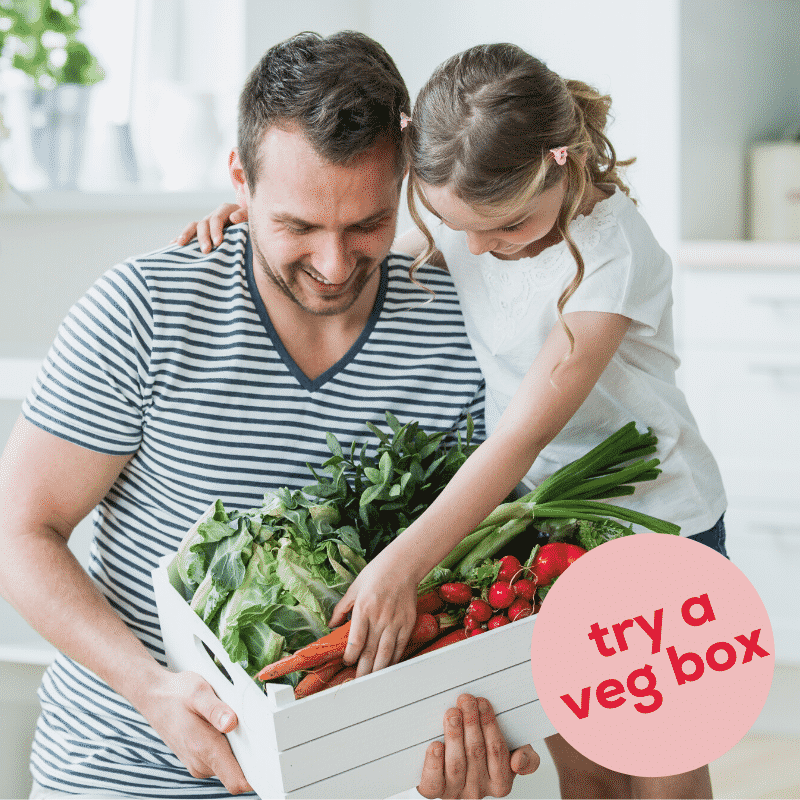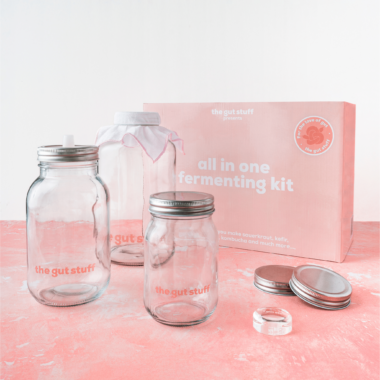
gut to get 30
You know that you should be aiming for 5 portions of fruit and veg per day but where does this new 30 number come from?
The American Gut Project looked at stool samples from over 10,000 citizen scientists from around the world (not just in the States) and has given some valuable insights into the differences in our gut microbes.
One of the most interesting things they discovered was that individuals who ate 30+ different types of plant-based foods per week had a more diverse mix of gut microbes than those who ate less than 10.
Research shows that greater gut microbe diversity is associated with health. By plants, we aren’t just talking about fruit and veg, it includes whole grains, nuts and seeds.
With our fave top tips and weekly pre made meal plans right at your fingertips, you’re sure to have beaming gut bugs!
Below we’ve put together our top tips to make hitting 30 different plant-based foods a week a breeze.
Veg boxes
Instead of opting for your usual online food shop or supermarket basket, why don’t you give a veg box a whirl?
Vegetable and fruit boxes often work out great value for good quality produce and a lot of them support local farmers too (so you’re shopping small at the same time!). Most include seasonal produce and change regularly.
There are lots of great options out there, including boxes for 1, wonky veg options and farm to home boxes.

Shopping lists and meal planning
Did you know that those who use a shopping list are more likely to eat healthier meals and more veg?
Get planning, use a shopping list and plan your meals in advance to challenge yourself to get out of your comfort zone and aim for 30 plants per week! Over on The Gut Stuff app, we have a weekly pre-made shopping list and meal plan all ready for you to hit those 30 plant points (and more!). We’ve done the hard work so you don’t have to! Head over to or download our app here
Our Gut Diary also has space for your weekly shopping list to help you shop smarter. Head to our shop to take a look!

Make your freezer your friend
Frozen food shouldn’t be shunned, it’s a great way of having nourishing food at hand, avoiding food waste and making cooking for one cheaper and more efficient.
These are our freezer staples for upping plant-based variety:
- Spinach – great for smoothies and to add to hot meals for an extra portion of veg.
- Frozen peas – perfect for a stir fry or curry!
- Frozen fruit (rhubarb, bananas and berries) – top on porridge, add to kefir or have as a snack.
- Ratatouille mix – perfect for last-minute meals, top with fish, lentils or make a pasta sauce.

Keep a diary
Slowing down and tuning in to what you are eating can enable you to see if you are getting enough variety over the course of your week.
Note down what you’ve eaten and tally up the number of different plants you’ve consumed over the week. The Gut Stuff app is your best friend here – like a “dear diary” for your wellness. Click here to download the app and get logging in our gut diary section.
Try fermented foods
Having a couple of jars of fermented veg in the fridge is a sure fire way to boost the number of plants in any meal – no effort required, just pop the lid and off you go.
Our staples are olives, sauerkraut, kimchi (which can contain over 5 different plants!) and fermented garlic.
Looking to create your own at home? Our All in One Fermenting Kit has all the equipment you need to make your ferments in one handy box! We’ve created a whole heap of how-to video tutorials which will show you how to make everything from milk Kefir to kimchi in simple, easy to follow steps!

Smart swaps
Making some simple swaps is also an easy way to up the number of plants you consume in a week. Give these a try:
- Go for a mixed bag of salad rather than one variety (they usually have over 3 different types).
- Go for different colours of the same veg – think traffic light peppers, red and white onion and cabbage.
- Go for a mix of nuts and seeds (which are super easy to make yourself). Sprinkle them on salads, soups or any meal for a bit of crunch.
- Switch up your pasta and include lentil, pea and chickpea pasta (yes, really!).

Are you looking for an easy way to track your variety each week? We’ve got an app for that!
And don’t forget, we’d love to see how you get on! Share your snaps with us on instagram using #guttoget30
References
Crawford, D., Ball, K., Mishra, G., Salmon, J., & Timperio, A. (2007). Which food-related behaviours are associated with healthier intakes of fruits and vegetables among women?. Public health nutrition, 10(3), 256–265. https://doi.org/10.1017/S1368980007246798
Ducrot, P., Méjean, C., Aroumougame, V., Ibanez, G., Allès, B., Kesse-Guyot, E., Hercberg, S., & Péneau, S. (2017). Meal planning is associated with food variety, diet quality and body weight status in a large sample of French adults. The international journal of behavioral nutrition and physical activity, 14(1), 12. https://doi.org/10.1186/s12966-017-0461-7
McDonald, D., Hyde, E., Debelius, J. W., Morton, J. T., Gonzalez, A., Ackermann, G., Aksenov, A. A., Behsaz, B., Brennan, C., Chen, Y., DeRight Goldasich, L., Dorrestein, P. C., Dunn, R. R., Fahimipour, A. K., Gaffney, J., Gilbert, J. A., Gogul, G., Green, J. L., Hugenholtz, P., Humphrey, G., … Knight, R. (2018). American Gut: an Open Platform for Citizen Science Microbiome Research. mSystems, 3(3), e00031-18. https://doi.org/10.1128/mSystems.00031-18







